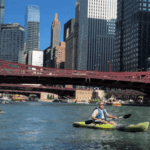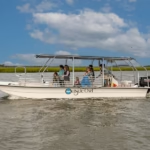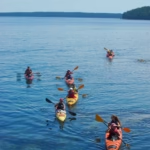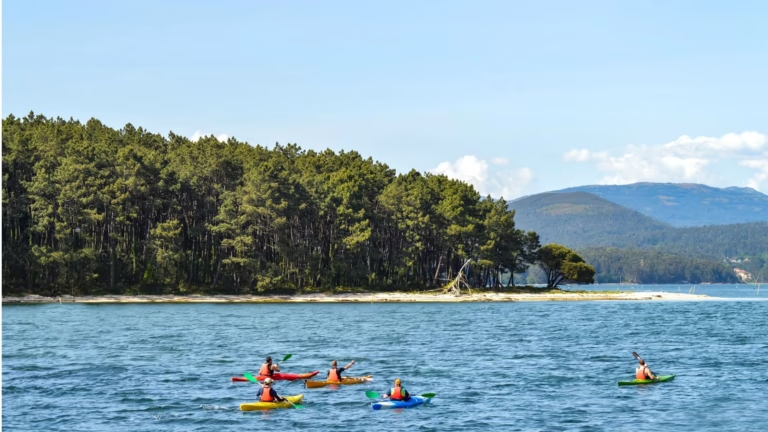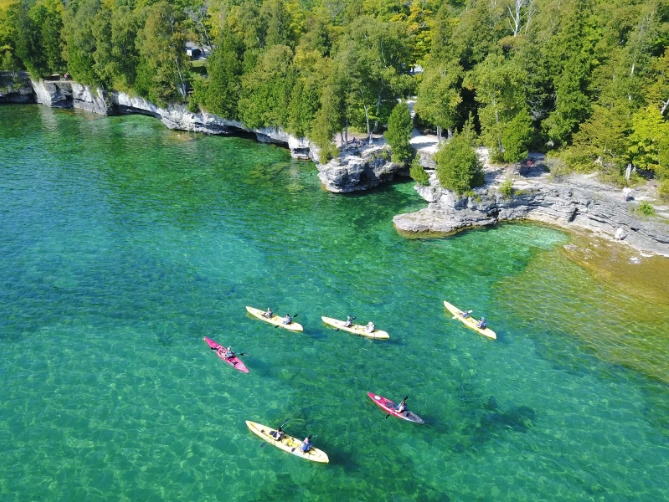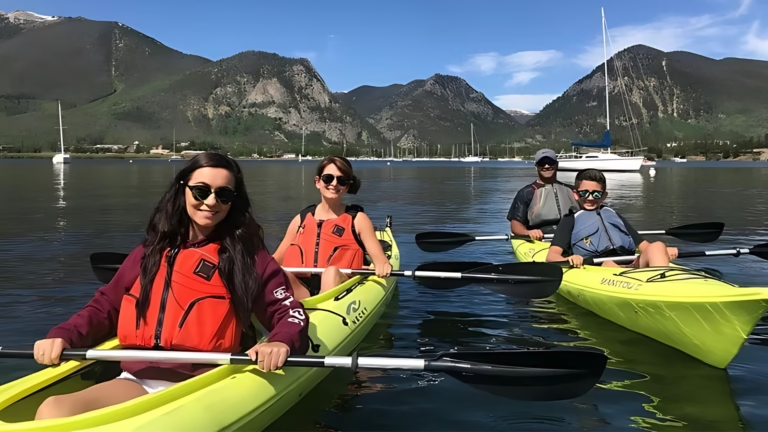Kenai Fjords and Prince William Sound offer the best kayaking trips in Alaska for wildlife viewing. These areas teem with marine life and stunning landscapes.
Alaska provides an unparalleled experience for wildlife enthusiasts. Kayaking through its pristine waters allows close encounters with whales, sea otters, and seals. The Kenai Fjords National Park features dramatic fjords and glaciers, perfect for spotting puffins and bald eagles. Prince William Sound, known for its serene beauty, offers a diverse range of wildlife including orcas and bears.
Both locations provide a unique opportunity to explore untouched nature. Whether you are a seasoned kayaker or a beginner, Alaska’s waters promise unforgettable adventures and breathtaking sights.
Introduction To Kayaking In Alaska
Alaska offers an unparalleled kayaking experience. Its vast wilderness and rich wildlife make it ideal. Imagine paddling through crystal-clear waters. You see glaciers, mountains, and abundant wildlife. Kayaking in Alaska is an adventure of a lifetime.

Why Choose Alaska?
Alaska is a top choice for kayaking enthusiasts. Here are some reasons:
- Stunning Scenery: Alaska’s landscapes are breathtaking. You will see glaciers, mountains, and forests.
- Rich Wildlife: Spot whales, seals, and eagles. Alaska’s waters are teeming with life.
- Unique Experience: Paddle through remote areas. Few places offer such solitude and beauty.
Best Time To Visit
The best time to kayak in Alaska is during summer. This is from May to September. The weather is milder, and the days are longer. Wildlife is also more active during these months.
| Month | Temperature (°F) | Wildlife Activity |
|---|---|---|
| May | 40-60 | Whales, seals |
| June | 45-65 | Eagles, bears |
| July | 50-70 | Whales, puffins |
| August | 45-65 | Seals, sea lions |
| September | 40-60 | Birds, whales |
Top Kayaking Destinations
Alaska offers some of the best kayaking trips for wildlife viewing. The state’s stunning landscapes and diverse wildlife make it a perfect destination for nature lovers. Here are the top kayaking destinations in Alaska.
Kenai Fjords National Park
Kenai Fjords National Park is known for its dramatic glaciers and abundant wildlife. Kayaking here offers a chance to see a variety of marine life.
- Glaciers: Paddle near the massive Aialik Glacier and Bear Glacier.
- Marine Life: Spot sea otters, seals, and whales.
- Bird Watching: Look for puffins and bald eagles.
This park provides an unforgettable kayaking experience with its breathtaking views.
Glacier Bay National Park
Glacier Bay National Park is another top destination for kayaking in Alaska. This park is a UNESCO World Heritage Site.
- Glacial Scenery: Paddle among towering icebergs and glaciers.
- Wildlife: See humpback whales, orcas, and sea lions.
- Bird Watching: Observe a variety of seabirds and shorebirds.
Experience the pristine wilderness and rich biodiversity of Glacier Bay.
| Destination | Key Attractions | Wildlife |
|---|---|---|
| Kenai Fjords National Park | Glaciers, Marine Life, Bird Watching | Sea Otters, Seals, Whales, Puffins |
| Glacier Bay National Park | Glacial Scenery, Marine Life, Bird Watching | Humpback Whales, Orcas, Sea Lions |
Wildlife You May Encounter
Alaska offers some of the best kayaking trips for wildlife viewing. The state’s diverse ecosystems are home to a variety of animals. While kayaking, you may encounter many fascinating species. Below, we discuss the wildlife you may encounter during your kayaking adventure.

Marine Life
Alaska’s waters teem with marine life. You might see sea otters floating on their backs. These adorable creatures often crack shells on their stomachs. Harbor seals may pop up near your kayak. Their curious faces peek out from the water.
If you paddle close to shore, you might see starfish and sea urchins. These colorful creatures cling to rocks and seaweed. During certain times, you might even spot whales. Humpback whales often breach, creating a spectacular sight.
Keep an eye out for:
- Sea Otters
- Harbor Seals
- Starfish
- Sea Urchins
- Humpback Whales
Bird Species
Alaska is a bird-watcher’s paradise. Bald eagles soar high above the water. Their majestic presence is hard to miss. Puffins are another delightful sight. These birds have colorful beaks and are expert divers.
Gulls and terns often follow your kayak. They swoop down to catch fish. You may also see loons and herons. These birds are often found near the shore. They stand still, waiting to catch their prey.
Birds you might see:
- Bald Eagles
- Puffins
- Gulls
- Terns
- Loons
- Herons
Essential Gear For Kayaking
Before embarking on the best kayaking trips in Alaska for wildlife viewing, having the right gear is crucial. Proper equipment ensures safety, comfort, and an enjoyable experience. This section covers the essential gear you need for a successful kayaking adventure.
Kayaks And Paddles
Choosing the right kayak and paddle is vital for your trip. There are various types of kayaks, each designed for different conditions.
- Touring Kayaks: Ideal for long distances and stability.
- Recreational Kayaks: Perfect for beginners and calm waters.
- Inflatable Kayaks: Easy to transport and store.
When selecting a paddle, consider its length and material. Lightweight paddles reduce fatigue and improve control. Materials like fiberglass or carbon fiber are popular choices.
Safety Equipment
Safety should always be a priority. Essential safety gear includes:
- Personal Flotation Device (PFD): Always wear a PFD. It keeps you afloat in water.
- Helmet: Protects your head from injuries.
- Whistle: Use it to signal for help.
- First Aid Kit: Carry a basic kit for emergencies.
- Bilge Pump: Helps remove water from the kayak.
Additional items to consider are a dry bag for valuables and a spray skirt to keep water out of the kayak.
Having the right gear ensures a safe and enjoyable kayaking experience in Alaska. Prepare well and make the most of your wildlife viewing adventure.
Guided Tours Vs. Solo Adventures
Exploring Alaska’s waters offers stunning wildlife views. Kayaking here presents breathtaking sights. Choosing between guided tours and solo adventures can be challenging. Both options have unique benefits. Let’s dive into each to help you decide.

Benefits Of Guided Tours
Guided tours offer many advantages for kayak enthusiasts. Here are a few key benefits:
- Expert Knowledge: Guides know the best spots for wildlife sightings.
- Safety: Trained guides ensure your trip is safe and enjoyable.
- Equipment Provided: Tours often include all necessary gear.
- Learning Opportunities: Guides share interesting facts about the local wildlife.
Guided tours are perfect for beginners. They provide a structured and informative experience. It’s an excellent way to see Alaska’s unique wildlife.
Preparing For Solo Trips
Solo kayaking offers freedom and adventure. Preparation is key for a successful trip. Here’s a checklist for solo adventurers:
- Research the Area: Know the waters and potential wildlife.
- Check the Weather: Ensure favorable conditions before heading out.
- Pack Essentials: Bring safety gear, food, and water.
- Inform Someone: Let a friend know your plans.
- Stay Alert: Keep an eye on your surroundings for safety.
Solo trips offer a unique sense of freedom. They allow you to explore at your own pace. Always prioritize safety and preparation. Enjoy the serenity and beauty of Alaska’s waters.
Tips For Safe Kayaking
Embarking on a kayaking adventure in Alaska offers incredible wildlife viewing opportunities. To ensure a safe and enjoyable trip, it’s essential to be prepared. Here are some crucial tips for safe kayaking in Alaska.
Weather Considerations
Alaska’s weather can change rapidly. Always check the weather forecast before heading out.
- Dress in layers: The temperature can vary greatly. Wear moisture-wicking clothing and a waterproof jacket.
- Carry extra gear: Bring a dry bag with spare clothes and a raincoat.
- Watch for storms: If you see dark clouds, seek shelter immediately.
Emergency Procedures
Knowing what to do in an emergency is vital. Here are some key procedures.
- Carry a whistle: A whistle can help you signal for help.
- Bring a first-aid kit: Include bandages, antiseptic wipes, and pain relievers.
- Have a communication device: Use a waterproof phone or a satellite communicator.
By following these tips, you can enjoy a safe and thrilling kayaking trip in Alaska while witnessing its stunning wildlife.
Camping And Accommodation Options
Planning a kayaking trip in Alaska offers an amazing wildlife experience. You will need to consider your camping and accommodation options. Whether you prefer camping under the stars or a cozy lodge, Alaska has something for everyone.
Popular Campgrounds
Alaska offers numerous campgrounds perfect for nature lovers. Below is a list of some popular campgrounds for your trip:
- Denali National Park: Offers stunning views and diverse wildlife.
- Kenai Fjords National Park: Known for its glaciers and marine life.
- Wrangell-St. Elias National Park: Largest national park in the U.S.
Lodging Alternatives
If camping is not your style, Alaska has many lodging options. Here are some alternatives for a comfortable stay:
- Bed and Breakfasts: Enjoy a cozy stay with local charm.
- Cabins: Perfect for a rustic yet comfortable experience.
- Hotels: Provide all the amenities you need for a relaxing trip.
Below is a table summarizing the different accommodation options:
| Accommodation Type | Features |
|---|---|
| Bed and Breakfasts | Cozy, local charm, personalized service |
| Cabins | Rustic, private, scenic views |
| Hotels | Amenities, comfort, easy access |
Choosing the right accommodation can enhance your kayaking trip in Alaska. Whether you opt for camping or lodging, you will have an unforgettable experience.
Conservation And Respect For Wildlife
Alaska offers some of the best kayaking trips for wildlife viewing. It’s crucial to respect the habitats and behaviors of local wildlife. By following conservation principles, kayakers can protect these natural environments.
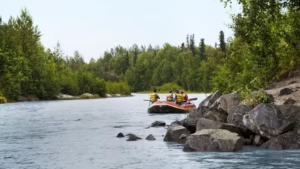
Leave No Trace Principles
Adhering to Leave No Trace principles is essential. These guidelines help minimize human impact on nature:
- Plan Ahead: Prepare for your trip to avoid emergencies.
- Travel and Camp on Durable Surfaces: Stick to established paths and campsites.
- Dispose of Waste Properly: Pack out all trash and food waste.
- Leave What You Find: Do not pick plants or disturb natural objects.
- Minimize Campfire Impact: Use a camp stove instead of making fires.
- Respect Wildlife: Observe animals from a distance.
- Be Considerate of Others: Keep noise levels low to maintain the peace.
Interacting With Wildlife
When encountering wildlife, it is vital to respect their space. Follow these guidelines to ensure safe interactions:
- Maintain Distance: Stay at least 100 yards from bears and 25 yards from other animals.
- Do Not Feed Wildlife: Feeding animals disrupts their natural diet and behavior.
- Observe Quietly: Use binoculars or a camera with a zoom lens for close-up views.
- Store Food Safely: Keep food and scented items in bear-proof containers.
- Report Unusual Behavior: Inform park rangers about any aggressive or sick animals.
| Principle | Description |
|---|---|
| Plan Ahead | Prepare for your trip to avoid emergencies. |
| Travel on Durable Surfaces | Stick to established paths and campsites. |
| Dispose of Waste Properly | Pack out all trash and food waste. |
| Leave What You Find | Do not pick plants or disturb natural objects. |
| Minimize Campfire Impact | Use a camp stove instead of making fires. |
| Respect Wildlife | Observe animals from a distance. |
| Be Considerate of Others | Keep noise levels low to maintain the peace. |
Planning Your Trip
Alaska offers breathtaking kayaking trips perfect for wildlife viewing. Proper planning ensures a memorable and safe adventure. This guide covers booking in advance and a packing checklist to help you prepare.
Booking In Advance
Securing your spot early is crucial. Alaska’s best kayaking tours fill up quickly. Here’s why booking in advance is important:
- Availability: Popular tours sell out fast.
- Best Guides: Experienced guides get booked first.
- Early Bird Discounts: Save money by booking early.
Consider these tips for booking:
- Research different tours and operators.
- Read reviews and check ratings.
- Contact the operator for availability.
- Book your trip and confirm details.
Packing Checklist
Pack smartly for your kayaking trip. Use this checklist to ensure you have all essentials:
| Item | Purpose |
|---|---|
| Dry Bags | Keep belongings dry. |
| Life Jacket | Ensure safety on the water. |
| Waterproof Clothing | Stay dry and warm. |
| First Aid Kit | Handle minor injuries. |
| Binoculars | Enhance wildlife viewing. |
| Camera | Capture memorable moments. |
| Map and Compass | Navigate safely. |
Remember these additional items:
- Snacks and water
- Sunscreen and hat
- Multi-tool
- Flashlight or headlamp
Being prepared ensures a smooth and enjoyable kayaking experience in Alaska.
Frequently Asked Questions
What Are The Best Kayaking Spots In Alaska?
Alaska offers many great kayaking spots. Popular locations include Kenai Fjords, Glacier Bay, and Prince William Sound. Each spot provides unique wildlife viewing opportunities.
Can You See Wildlife While Kayaking In Alaska?
Yes, kayaking in Alaska is perfect for wildlife viewing. You can see seals, otters, whales, and various bird species. It’s a great experience.
Is Kayaking In Alaska Safe For Beginners?
Kayaking in Alaska can be safe for beginners with proper guidance. Many tours offer beginner-friendly options. Always follow safety instructions and use recommended gear.
When Is The Best Time For Kayaking In Alaska?
The best time for kayaking in Alaska is from May to September. This period offers milder weather and abundant wildlife sightings. Plan accordingly.
Conclusion
Exploring Alaska by kayak offers unmatched wildlife encounters. Paddle through pristine waters and witness nature’s beauty. These trips provide unforgettable experiences for adventurers and nature lovers alike. Choose one of these best kayaking trips for an extraordinary wildlife viewing adventure.
Get ready to create lifelong memories in the stunning Alaskan wilderness.


